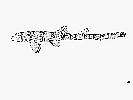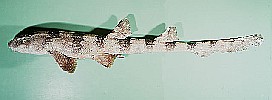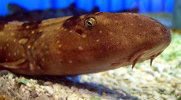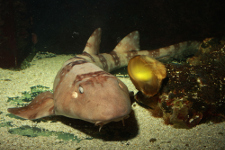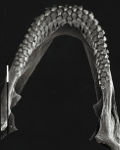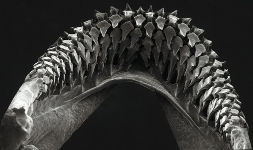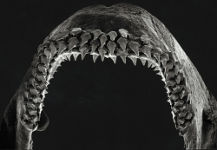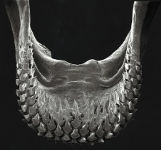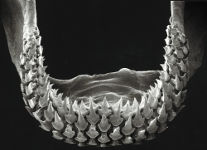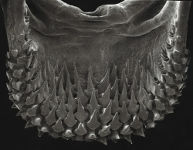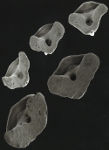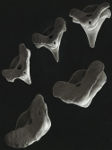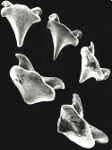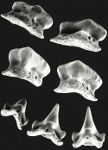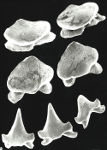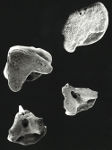Chiloscyllium plagiosum
(Bennett, 1830)
Whitespotted bambooshark
Classification: Elasmobranchii Orectolobiformes Hemiscylliidae
Reference of the original description
Class Pisces. In (Ed.), Memoir of the Life and Public Services of Sir Thomas Stamford Raffles (pp. 686–694), John Murray, London
Class Pisces. In (Ed.), Memoir of the Life and Public Services of Sir Thomas Stamford Raffles (pp. 686–694), John Murray, London
Synonyms / new combinations and misspellings
Chiloscyllium indicum plagiosa , Chiloscyllium indicum plagiosum , Chiloscyllium plagiosum interruptum, Hemiscyllium plagiosum, Scyllium ornatum, Scyllium plagiosum, Scyllium plagiosum interruptum
Chiloscyllium indicum plagiosa , Chiloscyllium indicum plagiosum , Chiloscyllium plagiosum interruptum, Hemiscyllium plagiosum, Scyllium ornatum, Scyllium plagiosum, Scyllium plagiosum interruptum
Types
Chiloscyllium plagiosum
Neotype: CAS: 36046
Chiloscyllium plagiosum interruptum
XXXX: No types known;
Scyllium ornatum
Holotype: BMNH: 1982.2.26.1
Chiloscyllium plagiosum
Neotype: CAS: 36046
Chiloscyllium plagiosum interruptum
XXXX: No types known;
Scyllium ornatum
Holotype: BMNH: 1982.2.26.1
Description :
Citation: Chiloscyllium plagiosum (Bennett, 1830): In: Database of modern sharks, rays and chimaeras, www.shark-references.com, World Wide Web electronic publication, Version 12/2025
Please send your images of "Chiloscyllium plagiosum" to info@shark-references.com
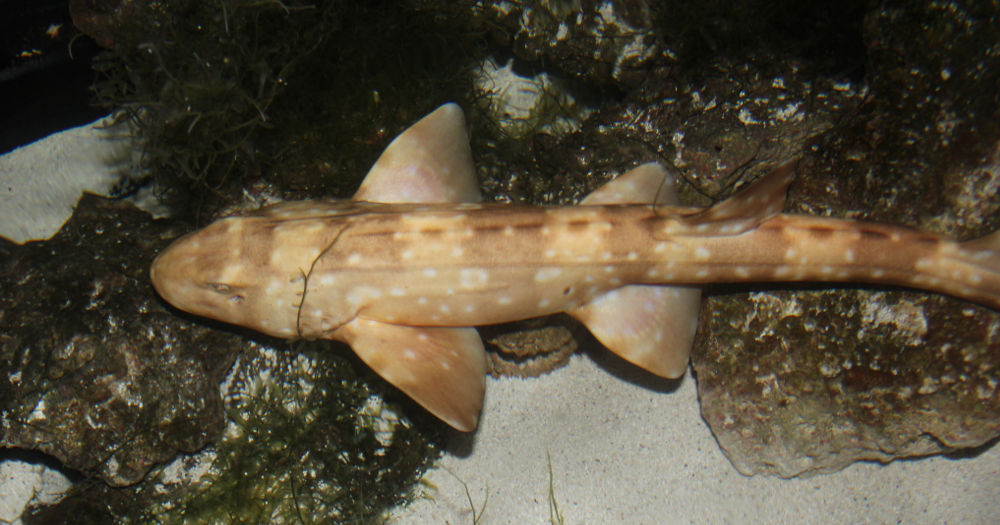
Chiloscyllium plagiosum (Bennett, 1830), © Chris Avila, Toronto Bentic Sharks, Canadian Marine Aquaculture, Toronto

Chiloscyllium plagiosum (Bennett, 1830), © Chris Avila, Toronto Bentic Sharks, Canadian Marine Aquaculture, Toronto
Common names
 Bamboa punteada,
Bamboa punteada,  Requin-chabot taches blanches,
Requin-chabot taches blanches,  White-spotted bamboo shark,
White-spotted bamboo shark,  White-spotted bambooshark,
White-spotted bambooshark,  White-spotted catshark,
White-spotted catshark,  Whitespotted bambooshark
Whitespotted bambooshark
 Bamboa punteada,
Bamboa punteada,  Requin-chabot taches blanches,
Requin-chabot taches blanches,  White-spotted bamboo shark,
White-spotted bamboo shark,  White-spotted bambooshark,
White-spotted bambooshark,  White-spotted catshark,
White-spotted catshark,  Whitespotted bambooshark
Whitespotted bambooshark
Short Description
Genus: Nostrils subterminal on snout; pre-oral snout long, mouth closer to eyes than snout tip; eyes and supraorbital ridges hardly elevated; no black hood on head or large spot or spots on sides of body above pectoral fins [531]. Caudal fin with a pronounced subterminal notch but without a ventral lobe [16823]. Genus: Nostrils subterminal on snout; pre-oral snout long, mouth closer to eyes than snout tip; eyes and supraorbital ridges hardly elevated; no black hood on head or large spot or spots on sides of body above pectoral fins [531]. Caudal fin with a pronounced subterminal notch but without a ventral lobe [16823]. Species: Young and adults with transverse dark bands and numerous white or bluish spots [16823] [531]. Body with lateral dermal ridges [16823] [531].
Genus: Nostrils subterminal on snout; pre-oral snout long, mouth closer to eyes than snout tip; eyes and supraorbital ridges hardly elevated; no black hood on head or large spot or spots on sides of body above pectoral fins [531]. Caudal fin with a pronounced subterminal notch but without a ventral lobe [16823]. Genus: Nostrils subterminal on snout; pre-oral snout long, mouth closer to eyes than snout tip; eyes and supraorbital ridges hardly elevated; no black hood on head or large spot or spots on sides of body above pectoral fins [531]. Caudal fin with a pronounced subterminal notch but without a ventral lobe [16823]. Species: Young and adults with transverse dark bands and numerous white or bluish spots [16823] [531]. Body with lateral dermal ridges [16823] [531].
Distribution
Indo-West Pacific: India, Sri Lanka, Singapore, Thailand, Indonesia, Viet Nam, China, Taiwan, Japan, the Philippines, and probably Malaysia. Reported from Korea [17688]. Source: www.gbif.org
Indo-West Pacific: India, Sri Lanka, Singapore, Thailand, Indonesia, Viet Nam, China, Taiwan, Japan, the Philippines, and probably Malaysia. Reported from Korea [17688]. Source: www.gbif.org
Human uses
fisheries: commercial
fisheries: commercial
Biology
Oviparous, paired eggs are laid. Embryos feed solely on yolk [733]. Hatches at 10-13 cm TL. In the Taiwan, hatching occurs in June to August [2539]. A common but little-known inshore bottom shark [518]. Feeds on bony fishes and crustaceans [531].
Oviparous, paired eggs are laid. Embryos feed solely on yolk [733]. Hatches at 10-13 cm TL. In the Taiwan, hatching occurs in June to August [2539]. A common but little-known inshore bottom shark [518]. Feeds on bony fishes and crustaceans [531].
Size / Weight / Age
83.0 cm TL (male/unsexed; [531]); 95 cm TL (female); max. reported age: 25 years (Ref. 72467)
83.0 cm TL (male/unsexed; [531]); 95 cm TL (female); max. reported age: 25 years (Ref. 72467)
Habitat
reef-associated; marine
reef-associated; marine
Remarks
shark-references Species-ID=1406;
shark-references Species-ID=1406;
Parasites (arranged by Jürgen Pollerspöck)
Cestoda
Nematoda
Cestoda
- Anteropora xiamenensis Tian, Li, Zhou & Wang, 2008 (nomen nudum) [24952]
- Yorkeria xiamenensis Li & Wang, 2006 [7558]
Nematoda
- Paraleptus chiloscyllii Yin & Zhang, 1983 [21235]
- Paraleptus minnanensis (Luo & Huang, 2001) [23387] [21235]
- Paraleptus scyllii Wu, 1927 [21235]








.jpg)
